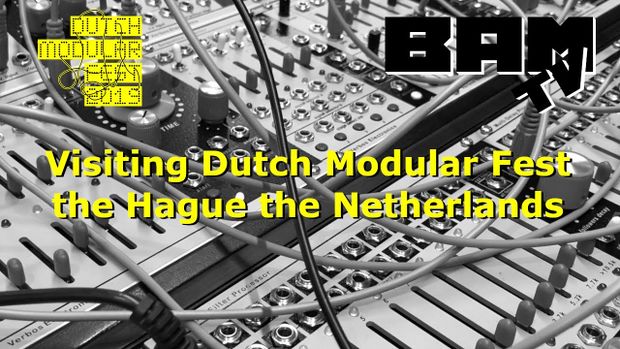User:Claxhanson/Materialising the blackbox: Difference between revisions
Claxhanson (talk | contribs) No edit summary |
Claxhanson (talk | contribs) No edit summary |
||
| Line 33: | Line 33: | ||
<br> | <br> | ||
Without knowledge of these patterns (including the different possible sound modulations as much as the different ways of programming an Arduino module) it can be hard to get a grip on the functioning of the modular system, and navigating through it turns out to be more of a wandering. | Without knowledge of these patterns (including the different possible sound modulations as much as the different ways of programming an Arduino module) it can be hard to get a grip on the functioning of the modular system, and navigating through it turns out to be more of a wandering. | ||
<br> | |||
====Inside the BlackBox, or the manual guide (publication)==== | ====Inside the BlackBox, or the manual guide (publication)==== | ||
In the continuity of our common ambition (and duty) of #materialising the BlackBox (and the numerous conversations we’ve had around the desire to convert complicated matter into an inclusive, open, and understandable practice), we’d create a corpus of contextualized spatial narratives, expanding the experience of navigating through sound to an experience of navigating through a set space, <br> | In the continuity of our common ambition (and duty) of #materialising the BlackBox (and the numerous conversations we’ve had around the desire to convert complicated matter into an inclusive, open, and understandable practice), we’d create a corpus of contextualized spatial narratives, expanding the experience of navigating through sound to an experience of navigating through a set space, <br> | ||
Revision as of 01:34, 15 October 2019
Dutch Modular Fest
Mapping the unseen
How do we measure or observe a world that is outside of our reach?
A common direction could be the fabrication of a participative cartography.
As a literal interpretation of the idea of « mapping the unseen », each module, or group of modules, would represent a defined territory in a shared landscape.
The intangible qualities of the general soundscape, in an attempt to provide an overview of all the connections to make, and a knowledge of their management, would be translated into a topographical depiction;
an atlas to navigate through sound - (our fastest sensor).
At first, as a user, you would be given some time to explore the installation, intuitively interacting with the modules: an embodied experience of sound-space, with the act of listening being the primary focus.
The understanding of the modules, at this point, can only be grasped through a conscientious listening of the sound modulations, in an attempt to recognize patterns.
Without knowledge of these patterns (including the different possible sound modulations as much as the different ways of programming an Arduino module) it can be hard to get a grip on the functioning of the modular system, and navigating through it turns out to be more of a wandering.
Inside the BlackBox, or the manual guide (publication)
In the continuity of our common ambition (and duty) of #materialising the BlackBox (and the numerous conversations we’ve had around the desire to convert complicated matter into an inclusive, open, and understandable practice), we’d create a corpus of contextualized spatial narratives, expanding the experience of navigating through sound to an experience of navigating through a set space,
or a set of spaces,
(as an act of transparency)
(as a tool of empowerment)
(as showing an effort to represent non-representable geographies)
as a practical guide book to read through the modules.
Each of our modules could have different inputs and outcomes, the maps designed for each of our modules could use different visual processing parameters and protocols, and all modules, or group of modules, could tackle fairly different issues, according to each of our concerns and interest, as long as they all work together on an interactive map, relating to the general soundscape (and work together in the soundscape, more generally).
Common directory
What does it actually mean to mystify/demystify a performance?
What is the part of subjectivity in the act of mapping?
Geographical information mapping systems appear to confirm an ‘objective’ map of the world, but if geo visualizations provide a meaning-making process, how are those experiences of space affected by social construct? What is the impact of framing (and other interventions) on our perceptions of what is 'out there’.
Creating a collective and visual imaginary of the soundscape can in fact also be harnessed, as a collective focus point, to investigate the subjective world of map-making, and lead to the realization that even allocentric representations of space and time can easily be of cultural inclination, and excluding of further, or contrasting, perspectives :
they are just some attempts to see the world more commodiously.
Without the map/s, navigating through sound is intuitive:
experimentation of wandering through the unseen;
/
Holding a map provides a visual subjectivity of space and time, completely transforming our sense and perception of location (and sound), and turning the act of navigating it into a meticulous and anticipated proceeding.
By being provided with orientation keys to understanding the virtual space and how to handle it, the user is confronted with dualities such as chaos/control and anti/intuitive navigating.
Our different approaches to the interactivity of the object should push the user to reflect on the processes of map-making, tackling the issue of translated interfaces, and the different impacts of its subjectivities.
Links :
https://www.academia.edu/13565176/Mapping_the_Unseen_Landscape_Using_Participatory_Mapping_to_Raise_Awareness_of_Aboriginal_Landscapes_in_the_South_East_of_South_Australia
https://www.amazon.fr/Indifferent-Boundaries-Concepts-Subjectivity-Mappings/dp/B00SQ9U70K
——

